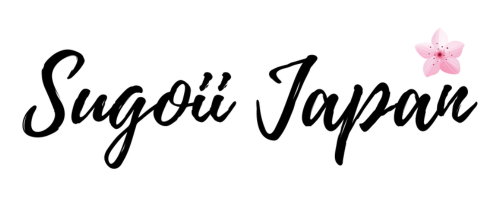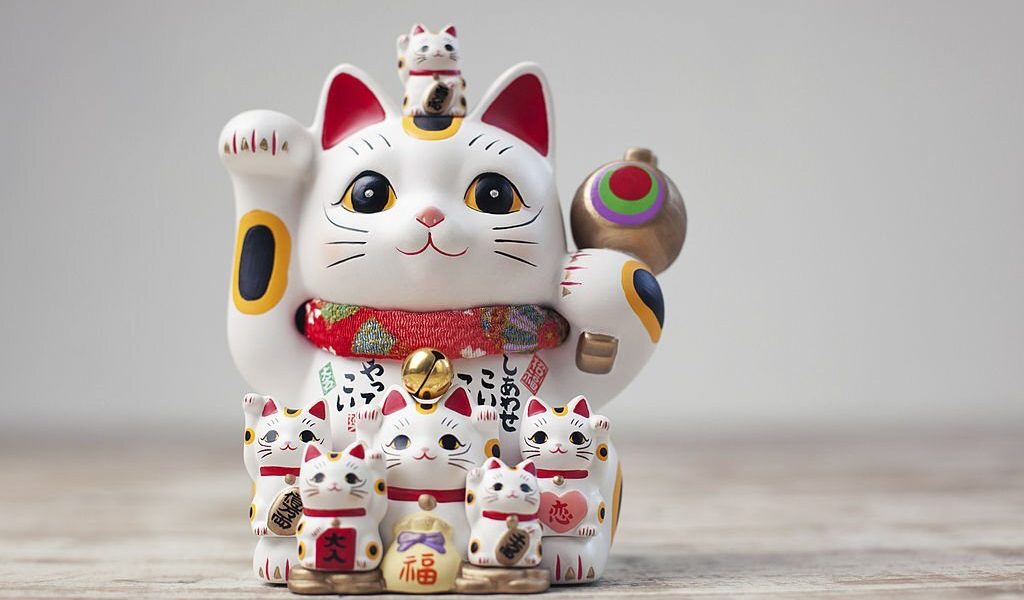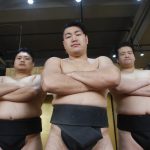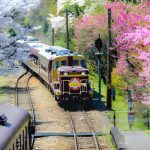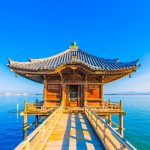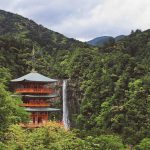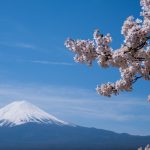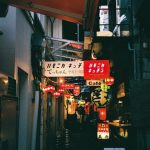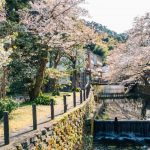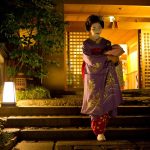The Japanese people are known to be quite superstitious and there are a number of charms that are considered good luck within their culture.
From small pouches to origami, there are many ways in which people in Japan believe in bringing luck and fortune into their lives, and dispelling bad energy.
One of the most obvious ways people do that is visiting temples and shrines and praying. However, to manifest good luck all year around, these sacred places also sell charms that allow people to take them home and keep them on them all year around.
The 10 Most Popular Japanese Lucky Charms
If you’re looking for a gift or souvenir to bring home from your Japanese travels, Japanese lucky charms are hugely popular and are always a good idea.
Let’s have a look at some of the 10 most popular Japanese lucky charms!
- Daruma Dolls
- Maneki Neko
- Koinobori
- Omamori
- Omikuji
- Osechi Ryori
- Matsu
- Ema
- Senbazuru
- Hagoita Paddles
1. Daruma Dolls
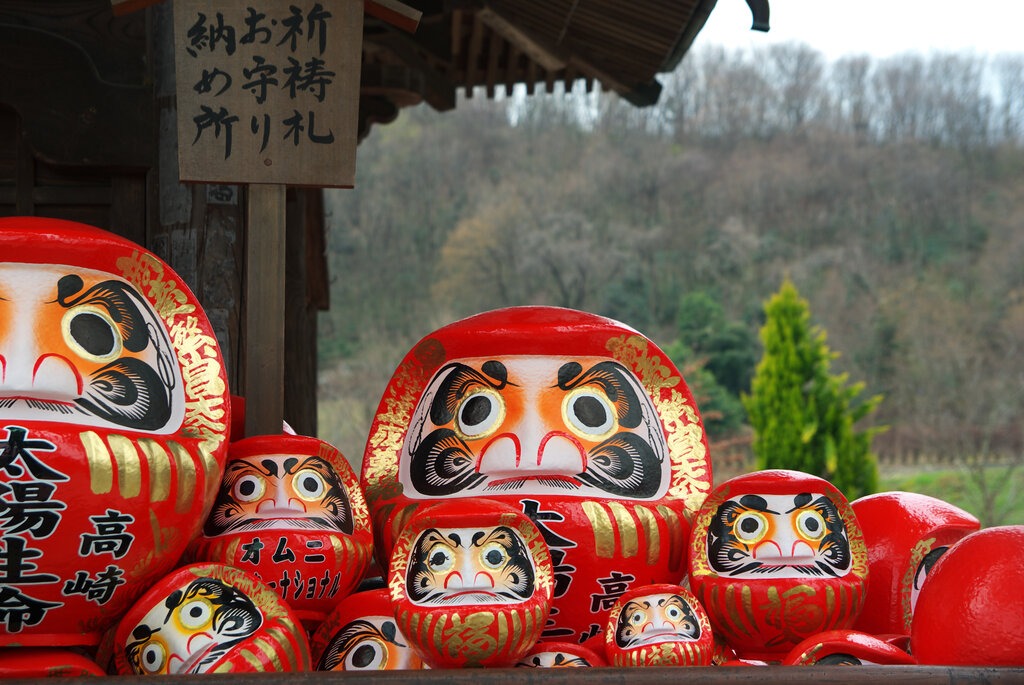
Daruma dolls are typically round-shaped dolls depicting the face of a man with thick eyebrows and a moustache. They normally fit into the palm of your hand, are made of paper or ceramic and are hollow.
When you first purchase them, their eyes will be blank. Once you make a wish, you can paint one eye, and if or when your wish comes true, you can then paint the other eye.
Daruma dolls are believed to bring luck, love, courage, and power to the individual possessing them. They’re sold in five different colours, however, red is the most traditional colour that people pick.
Want to read more about the Daruma dolls? We have a detailed article that you can check out here: Daruma Dolls Japan.
2. Maneki Neko
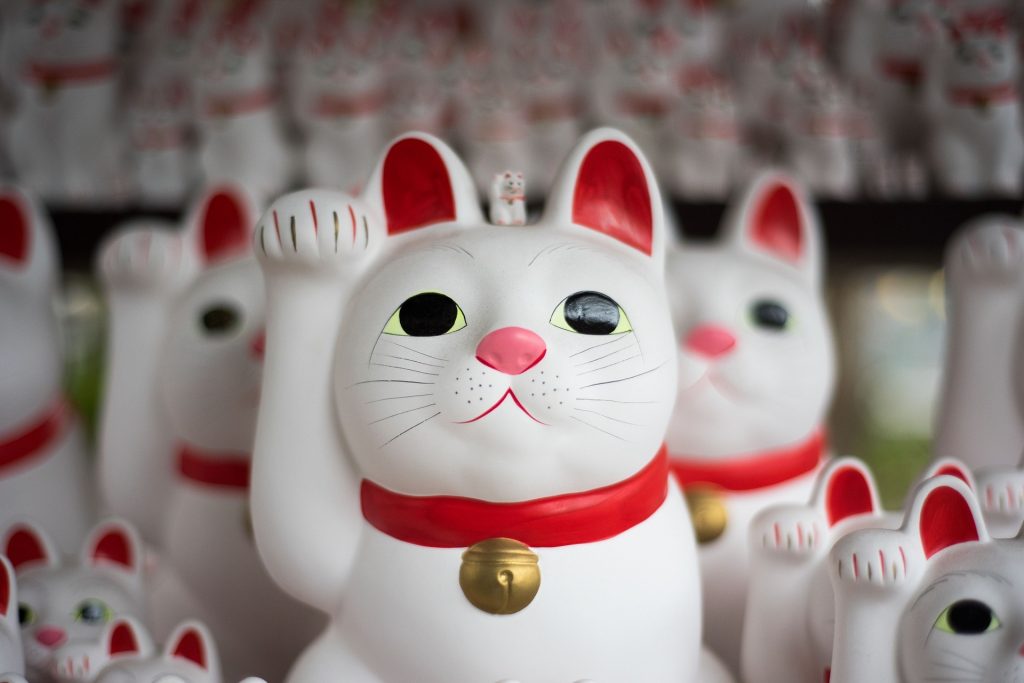
This cute waving cat figure is instantly recognisable. It’s a symbol used to bring good luck to where it is posted, therefore, you will often see these adorable charms sitting on display in shop fronts as it is believed to be a good way to wave good luck into the shop.
A classic Maneki Neko has a pleasant face with one or both claws raised. However, the palm is usually facing down, as though it is beckoning people.
If you’re interested in purchasing Maneki Neko products, we’ve dedicated an entire section of our shop to them: Maneki Neko Shop.
3. Koinobori
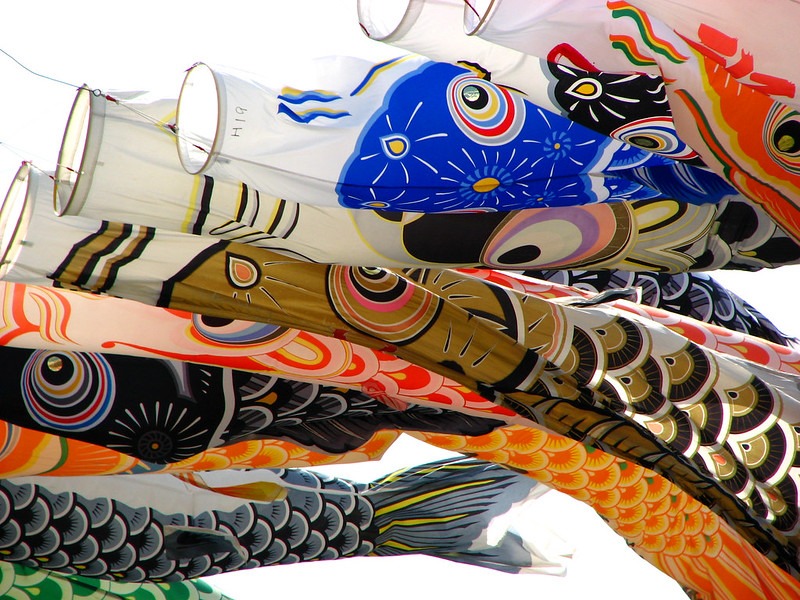
Koinobori are those bright and colorful carp streamers you will see floating around Japan if you travel there during the end of April until early May. This is the period where Children’s Day is celebrated, and the Koinobori are usually flown high to celebrate the happiness of boys and girls.
Typically, you will see streamers displayed in the order of the black carp, red carp, and then other colorful carp to represent the children in the family.
Koinobori has an interesting history, and if you want to read more about it, have a look at our Koinobori article here.
4. Omamori
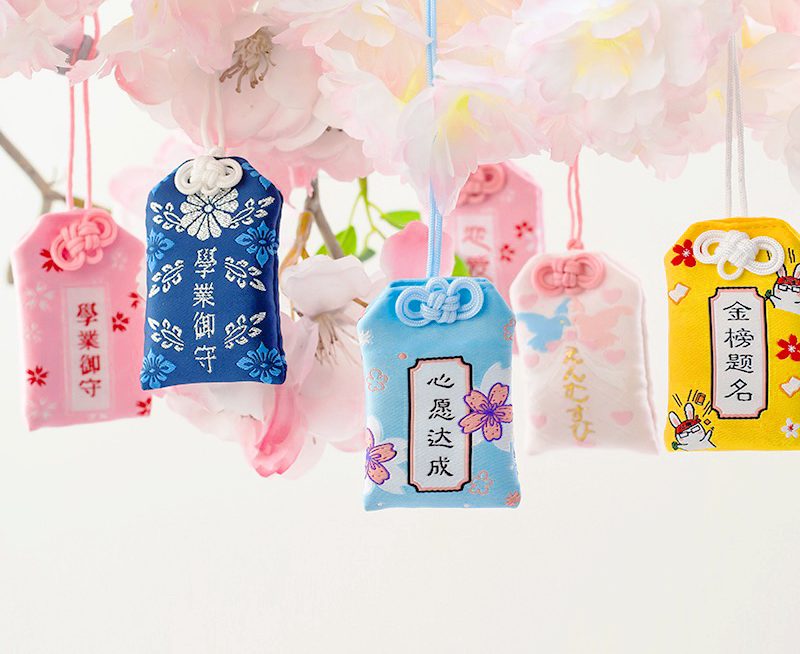
Omamori are probably the most popular types of Japanese lucky charms. These small colorful good-luck pouches are commonly sold in Shinto shrines and Buddhist temples, and contain sacred inscriptions inside.
As you can imagine, there are various types of Omamori charms, depending on what it is you’re after. The most common types would be for success, prosperity, happiness, and love.
However, you can also get them to ward off evil spirits or to just simply manifest luck.
Find Omamori super interesting? Get more info about them here: Omamori Charms.
5. Omikuji
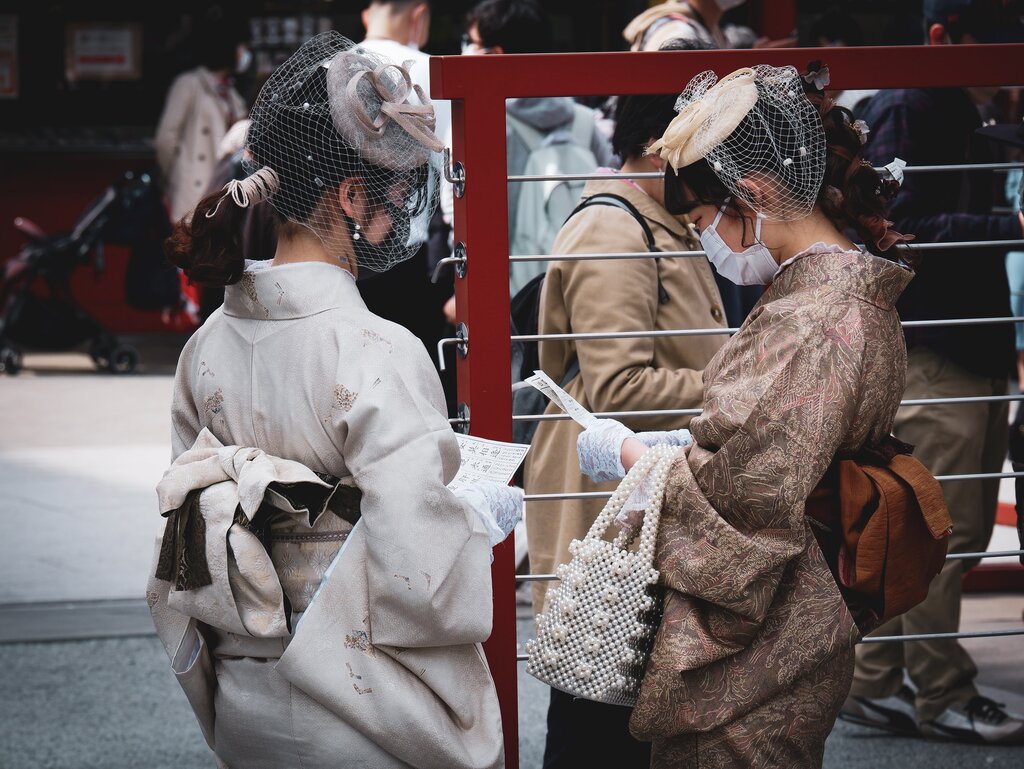
If you’re into fortune telling, then omikuji is a suitable Japanese charm for you.
Omikuji are small pieces of paper, typically found at temples or shrines, that predict your future.
When people visit these sacred sites, usually during New Year, they take the opportunity to draw omikuji to give an indication about how their next year will go. However, these fortune telling slips can be drawn at any time during the year.
The experience of getting your omikuji is quite unique; it’s not your typical shop charm!
When you’re ready, head to the room where the Omikuji are. Hold the cylinder (sometimes it is square) box which contains the thin sticks, and give it a little shake. When one stick slides from the small opening, it will have a number which will correspond with your Omikuji. Head to the nearby cabinet and take out the slip with that number, and there you have it!
To read more about what these Omikuji could mean and what to do with them afterwards, have a read of our fun omikuji article here!
6. Osechi Ryori
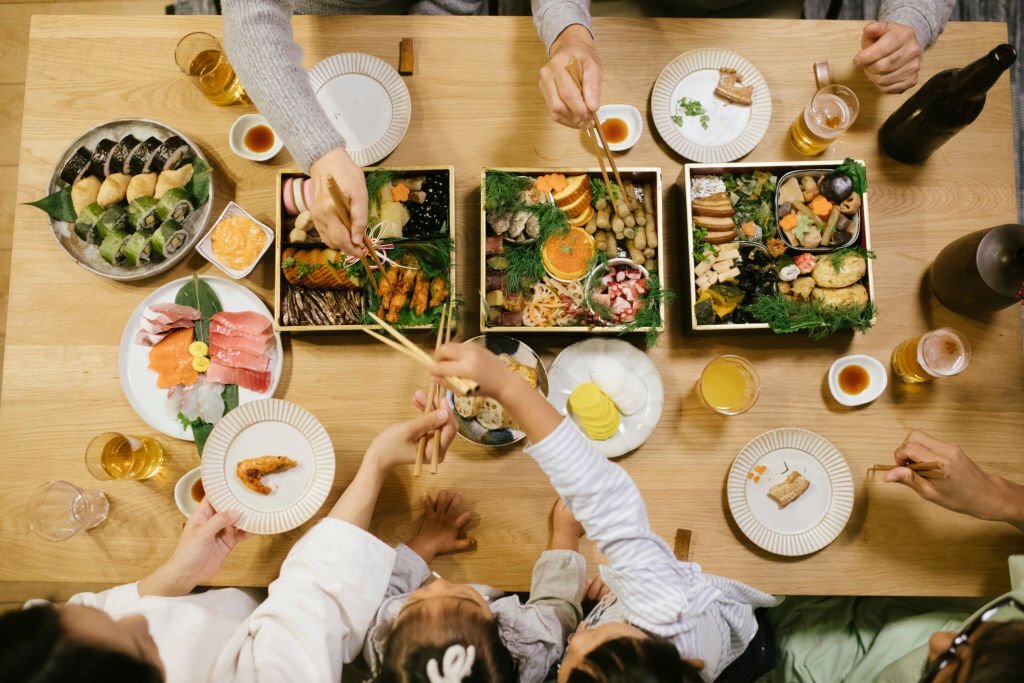
Charms don’t have to be small ornaments that you hang on items!
Osechi Ryori are traditional foods that are cooked and prepared around the New Year’s holiday in Japan. They include dishes such as marinated herring roe or kazunoko for those wishing for children, or soybeans for those praying for good luck.
As you can see, certain foods are eaten for particular wishes to come true!
7. Matsu
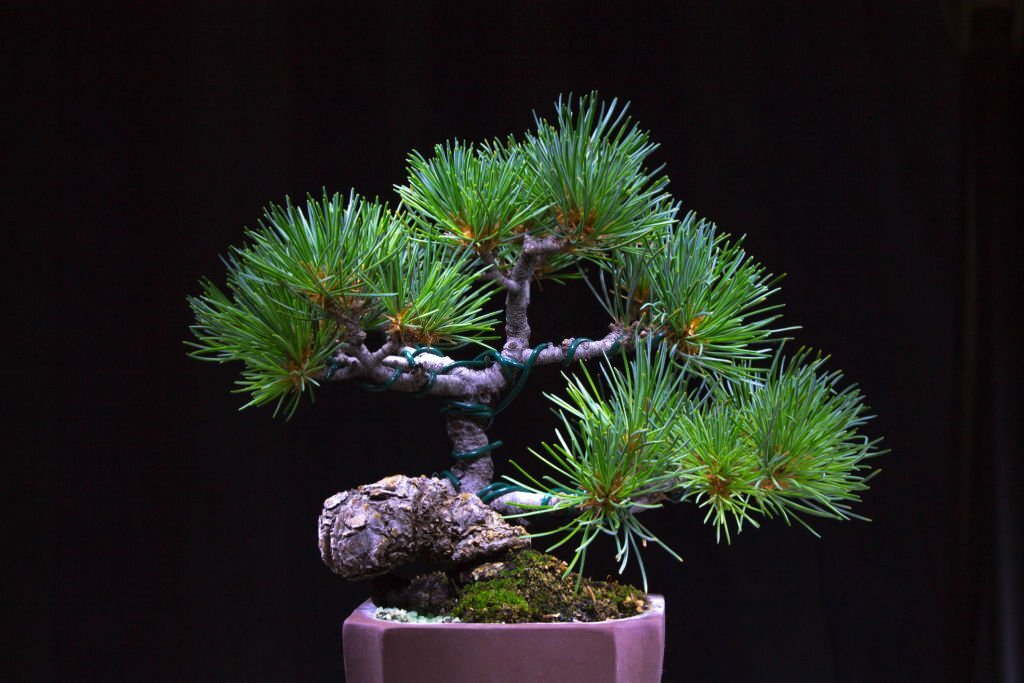
Matsu, or pine trees, are incredibly popular across Japan. If you’ve ever been to a Japanese garden, it’s almost a sure thing that it would have featured a stunning pine tree.
Pine trees are an evergreen species that can withstand even the harshest of climates. Therefore, they are viewed as symbols of longevity and good fortune.
During the New Year’s holidays, small ornaments made from pine, bamboo and plums are displayed in homes, offices and temples. These are called ‘kadomatsu’.
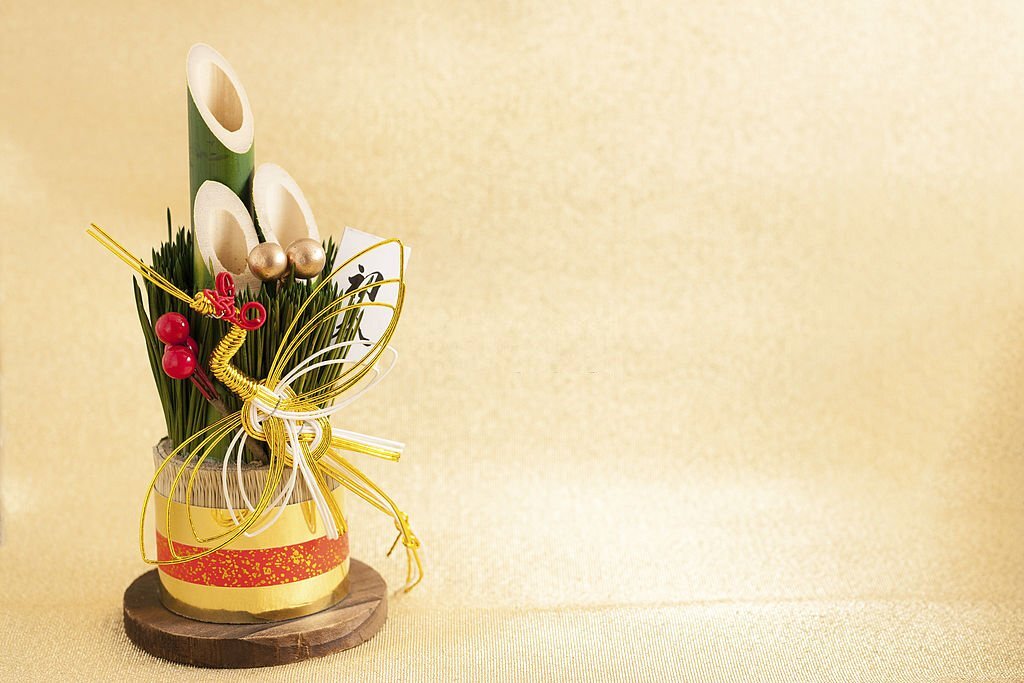
8. Ema
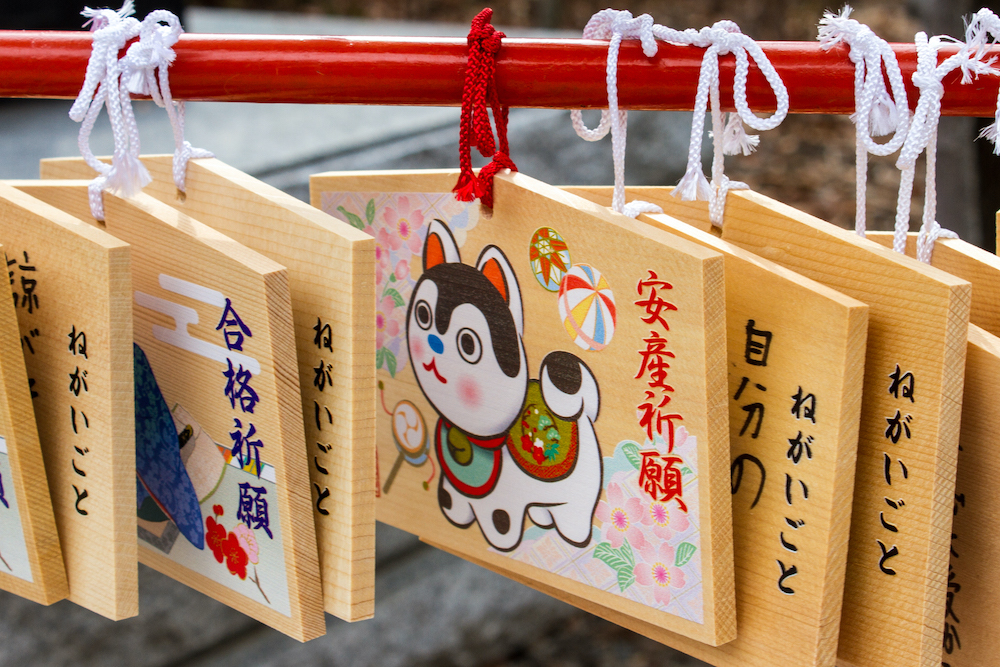
Japanese Ema are small wooden plaques that are used to make wishes. You will normally see them in ‘dedication areas’ in Japanese Shinto shrines.
There are a variety of Japanese Ema designs, and you can generally pick one that’s right for you. Simply go to the shrine’s office, peruse the various ones laid out on display and choose one that resonates with you. You can then write your wish on the Ema and then hang it from its string in the area where the other Japanese Ema lay.
Don’t worry if there’s no space, as they generally overlap each other.
If you’re interested in learning more about Ema, you can read this blog post: Japanese Ema.
9. Senbazuru
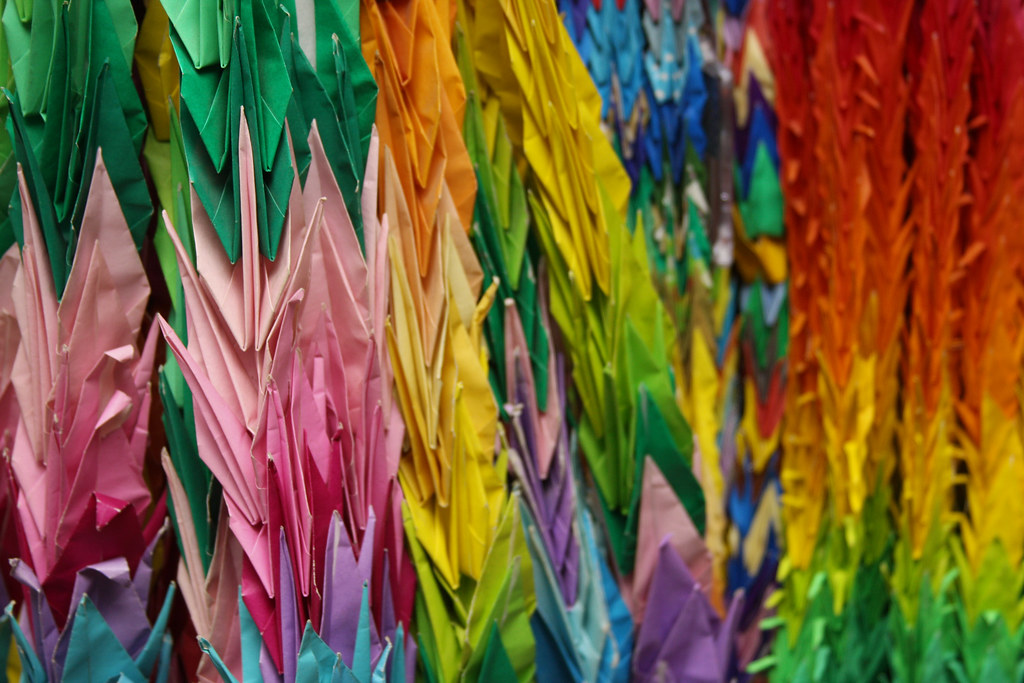
Many people associated Senbazuru, strings of 1000 cranes, with Sadako Sasaki.
The story of Sadako Sasaki is one that’s been whispered around all corners of the earth. Sadako was a victim of the atomic bombings in Hiroshima, and although she knew her sickness was fatal, she folded 1000 paper cranes to continue to put up a brave front for her family.
In Japan, the symbol of 1000 cranes are now made for prayers, wishes, and hope for recovery from illnesses. It is believed that if you fold 1000 paper cranes, you will be granted a wish.
10. Hagoita Paddles
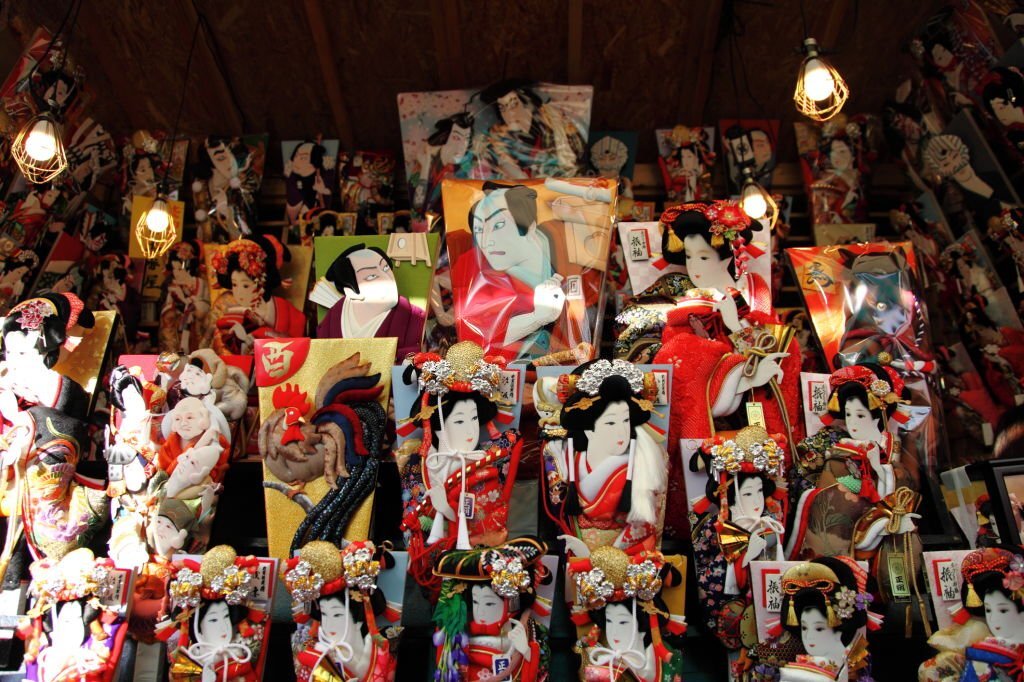
The Hagoita Paddle is a staple of Japanese New Year celebrations amongst women and girls.
It is an elaborately adorned paddle with a black stand. It is used to bounce shuttlecock between two players, and is said to help the user repel evil and bad energy.
They are a popular gift in Japan and are considered a powerful lucky charm.
—
I hope you enjoyed this long list of the 10 most popular Japanese lucky charms. How many did you know already?
The Japanese believe possessing or gifting any of these charms will bestow a great amount of good luck to its owner.
Even if you’re not a typical good luck charm person, you must admit, these Japanese charms are quite adorable and make for the perfect souvenir!
